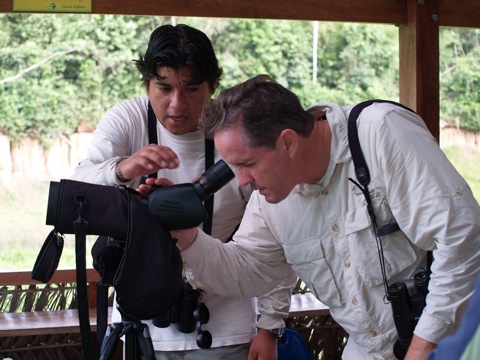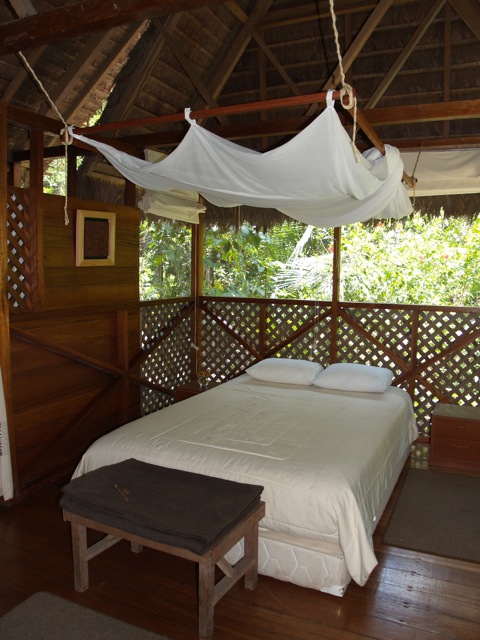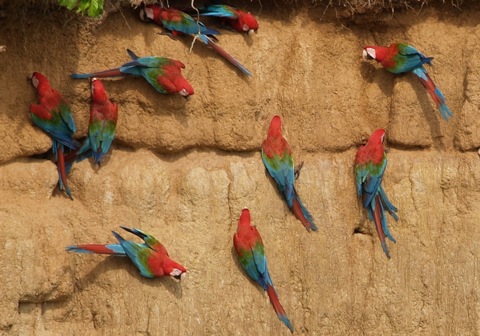
|
|
 |
||||||||||||||||||||
|
|
|||||||||||||||||||||
|
DR. CHARLES MUNN Protecting the Amazon Rainforest Text and Photos by Josephine Matyas  Charlie Munn may have been saving wildlife since he was a teenager, but the 50-something conservation biologist is not ready to quit just yet. His passion for the rainforest is contagious, his commitment, unrivaled. So, maybe you should plan to check back when he’s 100... Charlie Munn may have been saving wildlife since he was a teenager, but the 50-something conservation biologist is not ready to quit just yet. His passion for the rainforest is contagious, his commitment, unrivaled. So, maybe you should plan to check back when he’s 100...“I was enthralled with birds as a child,” says Charles Munn. “My stepbrother introduced me to birding when I was nine, and my mother was willing to indulge my obsession with birds and birding. And all through high school it was all about birds. More and more birds.” But it was the macaws of the Amazon that caused the young biologist to switch to macaw ecological research as he was finishing up his doctorate thesis. Thus began a long study of the endangered macaws of South America, a specialty in which Munn is recognized – and celebrated – as the world leader. His work has been featured in National Geographic, TIME, Newsweek, Animal Planet and the Discovery Channel. Ornithology may have placed the largest rainforest on the planet onto Munn’s radar, but it was seeing what he calls “the runaway tendency to destroy nature” that fueled his passion to preserve one of the world’s most diverse and fragile ecosystems. “I was crazed about watching the birds, but I quickly noticed that the Peruvians were going to kill all the animals in the Manu jungle region for meat and skins,” he says, “and it made me crazy.” At the time, the official Peruvian park policy was to kill all the larger animals and to capture monkeys for sale to medical labs. While still a grad student, Munn wrote a new policy for Manu National Park (a remote Biosphere Reserve that is the largest national park in the country) with a focus on conservation and sustainability.  Decades later, these policies are still in effect and the area’s premier ecotourism lodge, the Manu Wildlife Center, established by Munn, offers what has been heralded by Condé Nast Traveler as “the most intense wildlife experience in Amazonia.” Decades later, these policies are still in effect and the area’s premier ecotourism lodge, the Manu Wildlife Center, established by Munn, offers what has been heralded by Condé Nast Traveler as “the most intense wildlife experience in Amazonia.”“They needed someone to show them that ecotourism was the way to go,” he explains. “At the time I convinced them to put their other plans aside and to go with scientific tourism. Ecotourism is the key to ensuring that all of this gets protected in the future.” Munn established Peru Verde as a non-profit group to develop and control viable ecotourism to save the Amazon. Under its umbrella is InkaNatura Travel, a conservation group that uses guest fees to purchase and protect rainforest acreage, as well as the largest network of rainforest ecolodges in the world. The Manu Wildlife Center, in a private reserve of old growth forest, is one of Peru Verde’s five unique ecotourism properties in the country. “I’m trying to get models that can protect the Amazon Basin,” explains Munn. “To develop models that have legs. I started out trying to protect specific spots, but learned it was better to develop a more general model for the Amazon. Let’s protect what’s already protected; let’s start with that. Protected areas still see illegal logging and hunting for meat – and these are huge threats to the ecology of the Amazon.”  Munn’s list of accomplishments is long. His first success was the 1980 creation of the Manu Reserve Zone, 262,000 hectares of the lower Manu River; followed by another 3.3 million hectares protected in Peru and Bolivia. But Munn is the first to admit that creating a protected area is only the first step. “It’s one thing to create parks, but to protect them is something different.” Munn’s list of accomplishments is long. His first success was the 1980 creation of the Manu Reserve Zone, 262,000 hectares of the lower Manu River; followed by another 3.3 million hectares protected in Peru and Bolivia. But Munn is the first to admit that creating a protected area is only the first step. “It’s one thing to create parks, but to protect them is something different.”His solution is to create ecotourism jobs for the local people, sharing the wealth and nurturing a mindset of protecting the habitat for birds and wildlife, rather than destroying it through mining and logging. At the Manu Wildlife Center, 95% of the staff is from local communities, including the guides who bring with them a wealth of information about the rich flora and fauna. Based on the success at Manu, future plans include establishing a program in the Amazon Basin of Brazil to save the habitat of the endangered jaguar population. Pointing to groups like the Ese’eja tribe of southeast Peru, Munn notes that deforestation rates have plummeted in areas where ecotourism projects have been established. “This community became involved in ecotourism, and the forests are saved while their per capita income has risen.” This is one of Munn’s many strengths: the ability to think big (protecting millions of hectares of fragile rainforest) and still appreciate the nuances. It seems there isn’t a bird that flies by that he doesn’t take notice of. While in the jungle, a flock of birds can pass overhead and Munn will fall silent for a moment; then he expertly picks out more than two dozen different species - mealy parrot, blue-headed parrot, Cuvier’s toucan, purplish jay, orange-cheeked parrot, and - of course - macaws.  “People ask me what is my favorite macaw,” says Munn, “and I have to answer: ‘whatever one I happen to be looking at that moment’.” Josephine Matyas can be reached at: www.writerwithoutborders.com FAST FACTS Tourist Information for Peru www.visitperu.com Manu Wildlife Center and InkaNatura Travel www.peruverde.org For additional information on staying overnight at Manu, go to: EcoExperiences |
|
|
|
|
| Site Map |